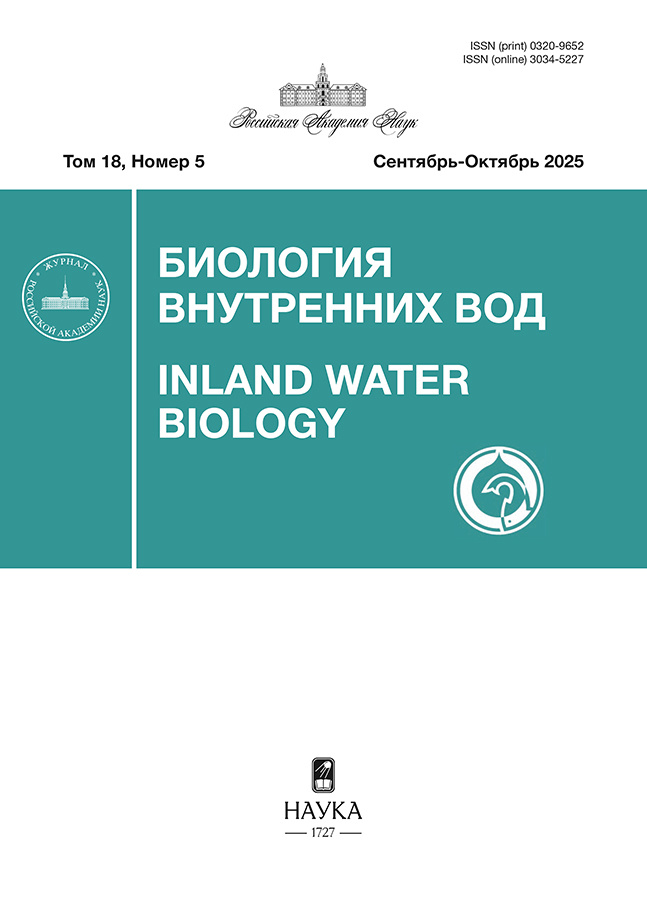Effect of high doses of γ-radiation on the development of cyclops insignis embryos, (copepoda, crustacea)
- Autores: Grishanin A.K.1,2
-
Afiliações:
- Papanin Institute for Biology of Inland Waters Russian Academy of Sciences
- Dubna State University
- Edição: Volume 18, Nº 5 (2025)
- Páginas: 991-993
- Seção: КРАТКИЕ СООБЩЕНИЯ
- URL: https://cardiosomatics.ru/0320-9652/article/view/693418
- DOI: https://doi.org/10.31857/S0320965225050197
- ID: 693418
Citar
Texto integral
Resumo
The results of the experiment showed that the development of Cyclops insignis Claus, 1857 (Copepoda, Crustacea) embryos irradiated with γ-radiation doses of 50 and 100 Gy at the 1, 2 and 4 cell stage occurs up to the 4–16 cell stage. It is assumed that high doses of radiation lead to inactivation of the nuclear genome, and the development of embryos up to the 8–16 cell stage occurs due to cytoplasmic determinants.
Palavras-chave
Sobre autores
A. Grishanin
Papanin Institute for Biology of Inland Waters Russian Academy of Sciences; Dubna State University
Autor responsável pela correspondência
Email: andreygrishanin@mail.ru
Borok, Nekouzskii raion, Yaroslavl oblast, Russia; Dubna, Moscow region, Russia
Bibliografia
- Гришанин А.К., Акифьев А.П.1993. Диминуция хроматина и организация хромосом у Cyclops strenuus strenuus // Генетика. Т. 29.№ 7. С. 1099.
- Задереев Е.2016. Как радиация влияет на спящий планктон // Наука в Сибири. № 2. С. 2.
- Нейфах А.А.1962. Проблема взаимоотношений ядра и цитоплазмы в развитии. М.: ВИНИТИ.
- Нейфах А.А., Лозовская Е.Р.1984. Гены и развитие организма. М.: Наука.
- Смагин А.И.2018. Биологическое действие и защита от ионизирующих излучений. М.;Челябинск:Издат.центрЮУрГУ.
- Choppin G., Liljenzin J-O., Rydberg J.2002. Radiochemistry and Nuclear Chemistry. P. 713.
- Corsico JAG., Vaz Carreiro M.G.1992. Modalites de contamination du crustace planctoniqueDaphnia magnaStraus avec le 134 Cs. Etudes de la fixation et de la retention // Revue des Science de l’eau. V. 5(3). P. 381.
- Grishanin A.K., Chinyakova O.A.2021. Study of chromatin diminution inCyclops kolensis(Copepoda, Crustacea) by radiobiological methods // Comp. Cyt. V. 15. P. 329. https://doi.org/10.3897/compcytogen.v15.i4.64350, https://compcytogen.pensoft.net
- Jaeger J.2018. Shift happens: The developmental and evolutionary dynamics of gap gene system // Current Opinion in Syst. Biol. V. 11. P. 65. https://doi.org/10.1016/j.coisb.2018.08.004
- Pribil S., Marvan P. 1976. Accumulation of uranium by the chlorococcal algaScenedesmus quadricauda // Arch. Hydrobiol. Suppl. 49. № 2. S. 214.
- Rivera-Pomar R., Lu X., Perrimon N. et al.1995. Activation of posterior gap gene expression in theDrosophilablastoderm // Nature. V. 376. P. 253. https://doi.org/10.1038/376253a0
Arquivos suplementares










